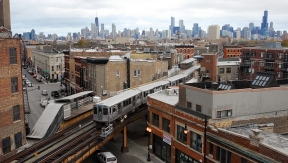
With all of society’s changes, people still value interacting with their neighbors, whether it takes place next door or within a virtual community. However, when it comes to how they connect with each other, several surprising disconnects have emerged. To understand what’s really happening in the neighborhood, State Farm commissioned a survey by Harris Poll to examine how people across the United States see neighbor relationships. The survey was conducted online among a national sample of 6,051 U.S. adults 18 and over. Findings include specific areas where attitudes and actions do not align. However, with simple actions, these are bridgeable gaps.
Key Findings
A sense of community among neighbors is a constant desire across generations, but the survey findings show Millennials may not know exactly how to connect; while Baby Boomers are generally most satisfied with relationships. Additionally, culture, gender and technology may play critical roles in neighbor relationships. Below are highlights of the findings. The full survey report can be found here.

- Millennials aren’t connecting, but they want to: 40 percent of Millennials wish they were more connected with neighbors, but are least likely to have had a face-to-face interaction in the last month (58 percent among millennials vs. 61 percent to 79 percent among older generations).
- The neighborhood gathering is organized by a dedicated few: 58 percent of neighbors says it’s important for neighbors to socialize, but only 16 percent of men and 11 percent of women have ever organized a social event. And 42 percent of men/34 percent of women regularly get together for holidays/events with their neighbors.
- Everyday helpfulness is valued, but not requested: Though indicated as a good neighbor trait, only 37 percent of respondents reported that they were more likely to ask a neighbor for help with a small project than a friend who does not live in their neighborhood. Although for those age 51 and older helping a neighbor in need is commonly defined as a good neighbor.
The full State of Neighbors survey results are available and include further findings around age, location, ethnic group and more. Visit www.statefarm.com/neighbors for more information.








